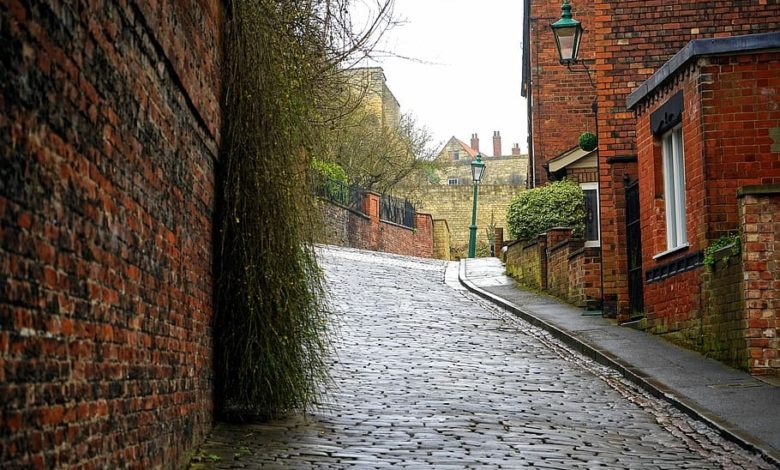Cobbled Path: Paving the Old-Fashioned Way

The countryside scenery is one of the most charming views. The nostalgia of bygone eras evokes a soothing feeling. These timeless places have a calming effect because they lack the hustle and bustle commonplace in cities. The relaxed atmosphere of a countryside village affects everyone in the vicinity. A central feature of the countryside is a cobblestone pathway. Cobblestone is a smooth and round rock usually found on riverbeds. For many ages, these stones lined the roads in cities, towns and villages. People associate a quaint yet quiet country life with them. The cobbled pathway signifies a place where some residue of the past remains.
What is Cobblestone?
A cobblestone’s literal meaning is “riverbed pebble”. These stones have distinct smooth and rounded surfaces and are a different shade from regular rocks and stones. They may also have a luminescent effect, as their smooth surfaces reflect light well. River currents wear these stones down, and that’s how they get their texture.
Historical Perspective
Cobblestones were used in pathways as they offered good support to the horse’s hooves, and were smooth enough for wheels to traverse over, without too much jostling. The stones were also durable and maintained the integrity of dirt roads even during rains. During spring, when the snow thawed, cobblestone pathways allowed horses to walk on them without slipping. These features made them a staple of many roadways.
Historically significant cities like Rome or Pompeii had cobbled paths. These paths survive to this day because of their durable nature. They can withstand any climate and weather and can last for millennia. Today stonemason companies craft cobblestones by weathering them down using machines. They can make a range of these stones in different colours to use in gardens, parks, porches or any decorative inlay in houses.
Cobblestone Types
The manufacturers make these stones with a mesh-backing. This mesh helps in laying and installing them effortlessly and is also cost-effective. They can come from a variety of rocks like:
Raven Granite
Raven granite stones have a dark-grey hue with blue undertones. These stones are usually laid in a brick pattern and have split edges adding an old-fashion vibe to the pathway. Their dark colour helps mask most stains, and are the perfect choice for driveways, as tyre marks won’t be visible on them. Their split edges also give a natural look to the driveway.
Ash Blue
Ash-blue stones come from bluestone blocks. They are dense and durable. They come in earthy grey and brown hues. These stones also have olive undertones that can complement modern or contemporary architectural styles. Their durability makes them perfect for roadways and driveways, while their flamed surfaces exude an old-world charm.
Travertine Brick
Travertine-brick stones have a whitish hue with golden undertones. These stones are mainly imported from Turkey and add a regal charm to any pathway. They come in brick sizes and have many laying options. The most popular pattern for laying these stones is the herringbone pattern which looks almost like an interlocked chevron pattern. Their smooth white appearance instantly elevates the look of any exterior.
Bonza Quartz
Bonza quartz is perhaps the most popular type. These stones come in a range of undertones from blue to olive. They can lend themselves to any pattern, though the brick-pattern is the most common.
Oyster Limestone
Oyster Limestone too comes in a range of colours from greyish blue to brown. When these stones are set in a combination of colours in a brick-pattern, it lends an exotic European charm to space. These stones are highly durable and have anti-slip surfaces. They are perfect for garden walkways and will contrast with the greenery.
A cobbled path brings timeless appeal and charm. These stones can inspire designs of architecture and complement any style. They are cost-effective décor and are a fascinating enhancement to any property.

